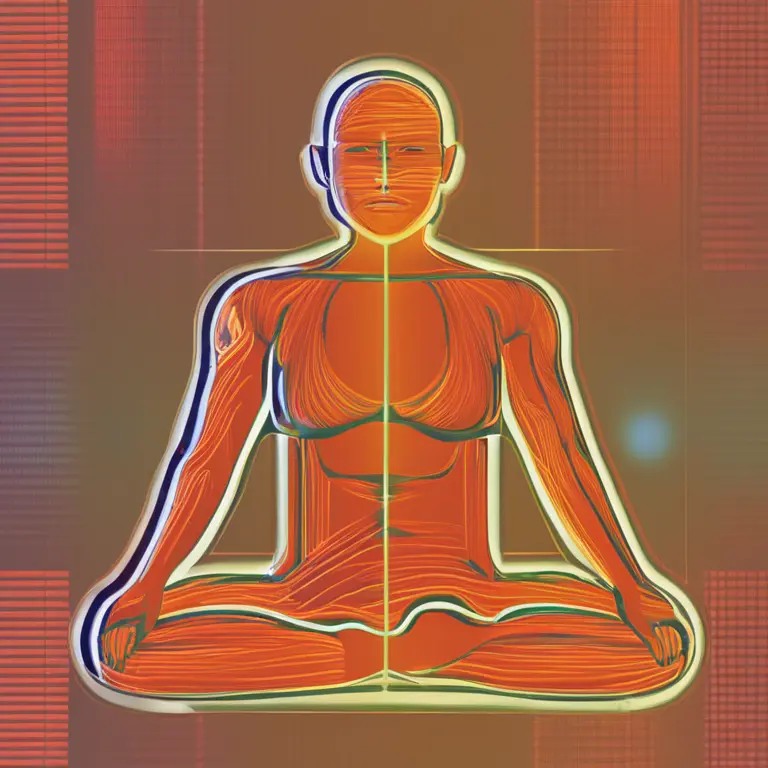
Mastering Pain Through Meditation
Discover effective meditation techniques that help manage and reduce physical and emotional pain, promoting inner peace and resilience.
article by Hina Kurosawa
Pain and Mindfulness Connection
Meditation has been used for centuries as a tool for achieving mental clarity, spiritual growth, and health improvement. In recent years, the focus has expanded towards its impact on pain management. The practice of mindfulness, a core element of meditation, encourages individuals to become fully aware of the present moment, including any sensations of pain. Mindfulness can alter one's perception of pain and can foster a more manageable experience of discomfort. This type of meditation teaches us that pain is not just a physical sensation, but also a psychological one that can be influenced by our thoughts and emotions.

Breathing Techniques for Pain Relief
Breathwork is a fundamental component of meditation and a powerful ally against pain. Deep, controlled breathing activates the body's relaxation response, which can help alleviate tension and pain. Techniques such as diaphragmatic breathing require you to focus on taking slow, deep breaths, filling your abdomen rather than your chest. This practice not only reduces the body's stress response but can also help distract from pain. Another technique, called the 4-7-8 method, involves inhaling for 4 seconds, holding the breath for 7 seconds, and exhaling for 8 seconds, a rhythmic pattern that promotes relaxation and pain endurance.

Body Scan Meditation for Pain Awareness
Body scan meditation is a practice where one pays attention to different parts of the body, observing any pain, tension, or discomfort without judgment. It's about developing a mindful awareness of bodily sensations and learning to experience them without emotional reaction. This technique encourages the practitioner to notice the presence of pain and acknowledge it, which can lead to a surprising decrease in its intensity. By methodically shifting your focus through different body regions, you can also identify areas of tension that may be contributing to your pain and consciously release them.

Visualisation and Healing
Visualization, or guided imagery, involves creating peaceful and healing mental images that can provide emotional and physical comfort. This technique can divert the mind from focusing on pain by conjuring up relaxing and positive scenarios. For instance, one might visualize a gentle stream washing away their pain or a warm, soothing light enveloping the area of discomfort. These images can signal the body to calm down and can be particularly effective for those suffering from chronic pain, as it offers a mental refuge from the discomfort.

The Role of Mantras in Pain Management
Mantras are another meditation tool, where a phrase or sound is repeated to concentrate the mind and promote relaxation. This repetition can create a mental environment that makes enduring pain easier. The chosen mantra can be specific to the individuals' needs, such as "I am calm and relaxed" or even something simpler like the word "peace". By muting external distractions and focusing inward, the mantra can help steer attention away from pain and towards a state of tranquility.
Meditative Movement as Therapy
While stillness is often associated with meditation, meditative movements such as yoga, tai chi, or qigong combine focus, breathing, and gentle movements to reduce pain. These practices are particularly beneficial for managing physical pain associated with muscular tension or chronic conditions. They promote flexibility, improve range of motion, and enhance overall well-being. The meditative aspect helps to address the emotional struggle that often accompanies pain, providing a holistic approach to pain management.
Published: 2/12/2024
Modified: 2/12/2024
More predictions
Come back here soon to learn more about yourself and your future


Diverse Meditation Techniques for Inner Tranquility
Explore a concise guide to diverse meditation techniques designed for fostering inner peace and mindfulness in the modern world.


Diverse Meditation Techniques for Modern Practitioners
Discover a range of meditation methods suited for contemporary lifestyles, offering pathways to inner peace and clarity.


The Spectrum of Meditation Practices for Inner Harmony
Delve into the various meditation techniques designed to foster mindfulness, tranquility, and deeper self-awareness.